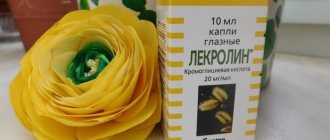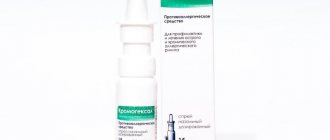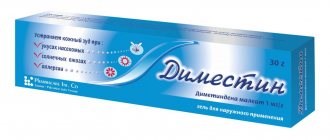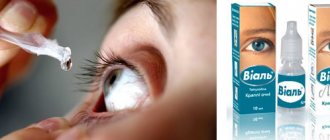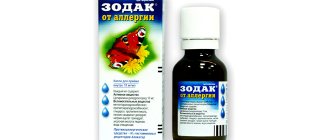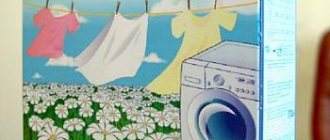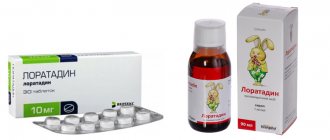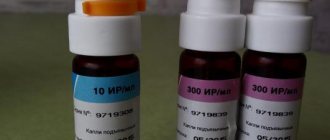Composition and release form
The main substance of the drops is olopatadine hydrochloride. The following are used as additional substances:
- Benzalkonium chloride.
- Purified water.
- Sodium chloride.
- Sodium hydroxide (or hydrochloric acid solution).
- Disodium phosphate dodecahydrate.
The medicine can be purchased in plastic bottles equipped with a dropper for the correct dosage. Each 5 ml bottle is placed in a cardboard box with instructions included.
pharmachologic effect
The drug belongs to antiallergic drugs.
The drug is a selective inhibitor of histamine H1 receptors. They counteract the release of inflammatory mediators from mast cells. This is due to its antiallergic properties. Local use of the drug causes its low systemic absorption. The active substance reaches its maximum concentration in the blood plasma only after 2 hours. The half-life from blood plasma is approximately 3 hours. Approximately 65% of the substance is excreted unchanged through the kidneys.
The substance can be used not only for the treatment of allergic conjunctivitis of seasonal origin, but also for their prevention. For preventive purposes, the medicine is started to be used in advance before encountering the allergen.
The active substance eliminates itching and burning, conjunctival hyperemia and lacrimation during the period of illness. As you use this medication, the need for additional corticosteroid medications often decreases.
Analogs
Analogues of Lecrolin for the active substance are:
- Chrome allergist. These are eye drops based on cromoglycic acid. Indications for use are acute and chronic forms of allergic conjunctivitis. Cost about 80 rubles.
- Cromohexal. This is an ophthalmic solution of cromoglycic acid. Has anti-allergic and anti-inflammatory effects. The cost of 10 ml is about 120 rubles. Read more about Cromohexal→
Lecrolin 10 ml costs 120 rubles.
Allergodil drops have an antiallergic effect. They are represented by a 0.05% azelastine solution. Indication for use is allergic conjunctivitis. The drug has a powerful antiallergic and membrane-stabilizing effect; it is not used for children under 4 years of age or in the first trimester of pregnancy. The course of treatment is no more than 1.5 months. The product is expensive. For a 6 ml bottle you need to pay 520 rubles.
Another expensive substitute for Lecrolin is Opatanol. Active ingredient: olopatadine. Contraindication for use is intolerance to the components in the composition. The product is available in 5 ml dropper bottles. Cost 650 rub.
Allergies should not impair your quality of life. If the patient has a seasonal predisposition, it is worth taking care of eye health in advance.
Leave your feedback on the use of Lecrolin eye drops in the comments.
Author: Oksana Belokur, doctor, especially for Okulist.pro
Indications and contraindications
The main purpose of the product is the treatment and prevention of allergic eye lesions. Some of the most common eye injuries include:
- Seasonal allergic conjunctivitis.
- Hay fever.
- Vernal keratoconjunctivitis.
Restrictions on use are imposed by:
- Individual intolerance to the constituent substances of the product.
- Pregnancy and breastfeeding period.
- Children under three years of age.
Side effects
Some patients experience side effects such as:
- Conjunctival hyperemia.
- Increased lacrimation.
- Pain and burning sensation in the eyes.
- Feelings of a foreign body.
- Keratitis, iritis.
- The appearance of fog in the eyes.
- Swelling of the eyelids.
In addition, you may experience:
- Dizziness, weakness, nausea, headache.
- Nasal discharge caused by rhinitis, pharyngitis, sinusitis.
- Taste changes.
ALLERGODIL drops reviews from users
Prices for the drug ALLERGODIL drops
Name:
Julia as Julia
Review:
Good day to all of you, my dears!
¦ ¦ ¦ ¦ ¦For a long time I was confident that I did not have any allergies because... Doctors attributed her symptoms to anything: red eyes to sensitive blood vessels and weak pressure, itching to sensitive and dry skin. The epic lasted, you won’t believe it, 5 years! Thanks to the smart man who, after listening to my ordeals, suggested that I have a very common allergy to dust, or more precisely, to dust mites. My eyes turned red, not often at first - from the wind, from cosmetics, from air conditioners. Then more and more often, until I turned into a magnificent red-eyed rabbit. I haven’t gone to an allergist yet, to be honest. It is impossible to exclude dust from life, but it is expensive and there is no time. I don’t encourage you to do the same) Read what I did here: Spray for carpets and upholstered furniture Allersearch ADMS But I first bought these drops: Eye drops HEXAL Cromo HEXAL anti-allergic agent, eye drops 2% Yes, I was planning to buy Allergodil , but decided that since this is praised, then why pay more? The result was very disastrous, so I had to pay twice) I don’t argue, we are all different and what suits us, but this is what happened to me. So, Meda Pharma Eye Drops Allergodil Price 442 rubles Volume 6 ml. Manufacturer Meda Pharma (Germany) Place of purchase Pharmacy*ru (cheapest there, now on sale for 402 rubles, and in regular pharmacies I saw it for 490) About the manufacturer About the drops Expiration date INSTRUCTIONS Composition of vazelastine hydrochloride 500 mcg Excipients: hypromellose (hydroxypropyl methylcellulose), disodium edetate, benzalkonium chloride, sorbitol 70%, sodium hydroxide, water for injection. Pharmacology Histamine H1 receptor blocker, phthalazinone derivative. It has a strong and long-lasting antiallergic effect. When administered intraocularly, additional anti-inflammatory and membrane-stabilizing effects appear: azelastine inhibits the synthesis and release of mediators of the early and late phases of allergic reactions (including leukotriene, histamine, platelet activating factor and serotonin, reduces the number of molecular adhesion cells and eosinophils). No clinically significant effect on the QT interval was detected even with long-term use of azelastine in high doses. With repeated use of Allergodil in the form of eye drops (1 drop in each eye 4), Cmax were very low and were detected at or below the measurement limit. Side effects From the organ of vision: increased sensitivity of the eye, sensation of a foreign body, change in color of the conjunctival membrane, irritation, soreness, itching, redness, swelling, increased lacrimation; rarely - dry eyes, blepharitis. Systemic reactions: dyspnea, dysgeusia, dry skin. Indications - prevention and treatment of seasonal allergic conjunctivitis - treatment of non-seasonal (year-round) allergic conjunctivitis Standard bottle Expiration date available There was a protective plastic ring on the lid Convenient spout APPLICATION I, being sensitive, was afraid that I would definitely have a filmy feeling in my eyes , or a feeling of sand!) But I was incredibly lucky: My eyes sting for a few seconds, immediately after use, but the discomfort quickly goes away No clouding No sand This is despite the fact that I instilled the product in the morning and evening during the period of exacerbation (if it is year-round, then do not drip in advance It won’t work out) I decided not to increase the dose because... There was simply no such need - the droplets made me happy right away! RESULT 1. The eyes stopped being constantly red IMMEDIATELY. But they reacted to external factors for about another week2. A week later, I could calmly put on makeup and walk around shopping centers, spitting)) on air conditioners - my eyes didn’t turn red at all and didn’t react to anything. Habituation No addiction was detected! How I determined it: 1. I forgot to put the drops in my eyes a couple of times (once in the morning, once in the evening). There was no punishment)) - the eyes remained in decent, not reddened, condition2. I reduced the dose to once a day when I was sure that everything was fine with me, the same thing! Well, plus, I’m still actively fighting dust, so: I feel better, I feel so much better!) So, to sum up the RESULTS I would include the price as a disadvantage, but I won’t reduce the price for such effective drops - I won’t raise my hand) Pros 1 Drops act quickly even during an exacerbation2. The daily effect lasts 12 hours or more3. The effect of the treatment is excellent4. There are no side effects (for me personally)5. No addiction was detected. I definitely recommend Allergodil - finally, I can leave the house as a person)? ? ? ? ?Good health to you all!? ? ? ? ? | irecommend.ru Name:
stydentkaF
Review:
In August, my allergies usually get worse.
While in other months regular drops like Zyrtec or Fenistil are enough, in mid-August I start to get so sick that I have to use local remedies. For example, this year conjunctivitis began after a walk in the park. And it didn't last for more than a week. I had to go to the hospital. The doctor decided that this was a complication of allergies and prescribed Allergodil. The medicine is not expensive. 240 rubles, 10 ml bottle. A couple of drops in each eye is enough to relieve itching and discomfort. The course of treatment is at least two weeks. But I had to drip longer, because when I stopped, itching still started to appear. | irecommend.ru Name:
LubovChe A relapse of conjunctivitis appeared again, 1.5 months after completing the course: Tobradex + Oftalmoferon. I had to see an ophthalmologist for a fee, since free medicine did not help in solving this problem. It turned out that the ophthalmologist in our clinic prescribes the same thing for everyone for all diseases. The new ophthalmologist, after examining me, prescribed Allergodil drops and prescribed them to be taken along with Ophthalmoferon. After reading the instructions, for some reason it was scary to put these drops in my eyes . The main active ingredient, azelastine, scared me, because it has a membrane-stabilizing effect, and therefore affects the tissue of the eye. But it is necessary to undergo treatment. I used these drops (4 times a day), alternating them with Oftalmoferon for 3 weeks. At first, there was some kind of heaviness in the eyes, a feeling of bitterness in the mouth. After 3-4 days, the discomfort began to go away. After 3 weeks, no conjunctivitis. After a course of Allergodil drops, it was difficult to start wearing contact lenses again. I got the impression that I was putting on lenses for the first time: I felt dizzy, my head began to hurt, and my eyes got tired in the evening faster than usual. However, literally after 5-7 days everything returned to normal. | otzovik.com
Features of use and dosage
The instructions for Opatanol eye drops suggest shaking the bottle before use.
The medicine is applied twice a day for daily use. The medicine is instilled into the conjunctival sac of each eye in the amount of one drop. The continuity of the course can be about four months. The dosage for children after three years of age does not differ from that for adults. In some cases, the doctor may prescribe an individual dosage of 2 drops three times.
The use of drops is associated with the risk of toxic ulcerative or pinpoint kerotopathy due to the presence of benzalkonium chloride in the preservative. Under the supervision of an ophthalmologist, drops should be used in patients with dry eye syndrome and corneal damage.
Contact lenses should be removed before use and put back on after using the product no earlier than 20 minutes later. During the period of bearing a child and breastfeeding, the medicine should be used only in extreme cases and under the supervision of a doctor. To prevent viral infections, it is recommended to use the dropper bottle as intended. Avoid getting dirt on the tip of the dropper.
If visual acuity deteriorates, patients are not recommended to drive vehicles or engage in activities that require high concentration. The product interacts well with other dosage forms for topical use, but it is recommended to maintain a five-minute interval between their use.
How to replace Opatanol - analogues of the drug
Opatanol is an antiallergic eye drop that is produced in Belgium. The drug is prescribed for allergic conjunctivitis.
The active substance is olopatadine, a histamine receptor inhibitor. Thanks to this drug, allergy symptoms such as lacrimation, photophobia and redness of the eye mucosa are reduced.
In the pharmacy you can buy analogues of Opatanol with a similar effect.
Properties of the drug Opatanol
Opatanol is an antiallergic eye drop that is used to treat allergic conjunctivitis and reduce the symptoms of seasonal allergies. The active ingredient is olopatadine. The composition contains hydrochloric acid, sodium phosphate, water and a number of other excipients.
Opatanol is an isotonic clear solution, colorless or with a slightly yellowish tint. The medicine is produced in polyethylene bottles with a capacity of 5 ml.
After contact with the mucous membrane of the eye, it reduces the production of histamine, due to which many symptoms of seasonal allergies disappear. In this case, the drug does not affect the size of the pupillary space.
Opatanol can only be used as directed by a doctor. The duration of treatment in some cases lasts up to 4 months.
Indications and contraindications
Opatanol is prescribed for seasonal allergies and conjunctivitis of allergic origin. The drug can also be prescribed for a number of other diseases that are accompanied by severe swelling of the eye tissue.
The drug has a number of contraindications; before starting treatment, you must be familiar with them. Opatanol should not be used in the following cases:
- In case of intolerance to individual components of the drug.
- At all stages of pregnancy and during breastfeeding.
Opatanol should only be prescribed to pregnant women if the expected benefit from such treatment is greater than the potential harm. Studies have shown that the active substance in eye drops passes into breast milk. To prevent the negative impact of the medicine on the child, breastfeeding is suspended during treatment.
The drug is generally well tolerated by patients of all age groups. If side effects are severe, this should be reported to your doctor.
Analogues of eye drops Opatanol
The cost of Opatanol eye drops is about 500 rubles. But if necessary, you can find several cheaper analogues. It should be borne in mind that replacing the prescribed original drug should only be done in consultation with the attending physician.
Olopatallerg
The active substance in these drops is also olopatadine. The medicine is available in 5 ml plastic bottles. Prescribed for seasonal allergic conjunctivitis, as part of complex treatment. The drug quickly eliminates inflammation and swelling. After eye treatment, allergy symptoms such as lacrimation, photophobia and itching disappear.
The medicine is not prescribed to children under 3 years of age, pregnant and lactating women. Caution is necessary when prescribing the drug to patients with dry eye syndrome or corneal diseases in the acute stage.
The cost of Olopatallerg is about 300 rubles.
No dose adjustment is required for elderly patients. Treatment is carried out as usual.
How to choose and apply
If it is necessary to replace Opatanol with an analogue, this should definitely be agreed with your doctor. For some patients, especially the elderly, it is important that the prescribed medicine is inexpensive but effective. If the cost of the drug is important, then you should immediately inform your doctor about it.
When buying any medicine, you need to pay attention to the expiration date. You should not buy drugs that will soon expire. You should purchase medications only from pharmacies. It is unacceptable to buy medicines by hand.
Before using Opatanol and its analogues, it is recommended to carefully read the instructions, paying attention to contraindications and possible side effects.
How to put eye drops correctly
Before treating your eyes, you should wash your hands well with soap or treat them with an antiseptic solution. Next, follow these instructions:
- Remove the cap from the bottle.
- The head is tilted slightly back, the lower eyelid is pulled slightly down with one hand, and the required amount of the drug is dripped with the other, usually 1-2 drops.
- After treating the eyes, press the inner corner for a few minutes, this will prevent the medicine from entering the bloodstream.
- The eyelids should remain closed for 1-2 minutes. At this time, you can move the eyeball so that the medicine spreads evenly.
- Open your eyes and dab the corners of your eyes with cotton wool, removing any remaining medicinal solution.
After each procedure, the bottle is tightly screwed and placed in the original cardboard packaging. Opatanol and its analogues can be stored at room temperature. The shelf life of an open medicine is no more than a month.
Opatanol is a topical antihistamine. Eye drops are prescribed for seasonal allergies and conjunctivitis of allergic origin. The drug eliminates redness of the conjunctiva, lacrimation and itching. The drug can be used for a long course of more than 3 months. If necessary, the patient is simultaneously prescribed local antihistamines.
Source: https://oculistic.ru/bolezni/allergiya/kak-vybrat-analog-opatanola
Patient reviews
Opatanol, Cromohexal, Lecrolin have only positive reviews. Patients note their effectiveness in preventing seasonal allergic reactions. Cheap drugs are available to most people, which makes them very popular and in demand.
My daughter has a very difficult time with seasonal allergies. The doctor prescribed Opatanol or Lecrolin as an antihistamine. Lecrolin helped eliminate allergy symptoms. Now we start taking it in advance, before the onset of the first signs.
Every spring I suffer from hay fever. I have been using Lecrolin during the allergy season for several years now. It helps me cope with the symptoms of seasonal exacerbation. During this time, my eyes often swell and my nose runs. The drug quickly relieves swelling and eliminates signs of allergic conjunctivitis. I buy this product before allergy season and live a full life.
During the allergy season I buy Opatanol drops. I am satisfied with their effectiveness, safety and reasonable cost. Sometimes during use there is a slight burning sensation, but this is nothing compared to the effectiveness of the product. It helps to get rid of allergic conjunctivitis very quickly, so I only use this remedy.
Allergy eye drops: types, application features
The human eye, due to its anatomical features, is susceptible to a wide variety of allergens: house dust, animal hair, pollen, mold, cosmetics, and volatile chemicals. Some medications, foods, and chemicals can become allergens. Manifestations from the eyes can be very diverse in clinical picture: from inflammation of the skin of the eyelids and lacrimation of varying intensity to damage to the optic nerve and retina. How to use eye drops for allergies?
Application area
Allergies on the eyelids are observed quite often in children and adults nowadays. Moreover, allergy symptoms can be very different. Allergic conjunctivitis is considered one of the most unpleasant reactions.
Antiallergic eye drops will help eliminate unpleasant symptoms: increased tearing, pain and discomfort.
Medicines used for allergies have their own indications and contraindications. Therefore, you should consult your doctor before using eye drops.
One of the characteristic symptoms of an allergic reaction is watery eyes.
Tear fluid is necessary to nourish the eyeball. Normally, it should be released no more than 1 ml per day. When an irritant hits the mucous membrane of the eyes, the protective system is triggered, and the lacrimal gland begins to produce more secretion. The main way to combat the increased work of the lacrimal gland is eye drops. The list of drugs that can relieve the symptoms of an allergic reaction is quite wide. These can be either antihistamine eye drops or agents that have an anti-edematous or anti-inflammatory effect.
Release form and mechanism of action
Lecrolin is available in the form of eye drops in dropper bottles with a volume of 10 ml. The concentration of the active substance is 2%.
The active component of the drug is cromoglycic acid . It stabilizes cell membranes and prevents the release of substances that trigger a chain of allergic reactions.
Additionally, the drug reduces the permeability of blood vessels, which limits the penetration of allergens into the eye.
Lecrolin acts quickly and within a couple of minutes after instillation it removes the most unpleasant symptoms of the allergic process - photophobia, excessive lacrimation and itching in the eyes.
Types of allergies
The most common types of allergic eye diseases are:
- Allergic dermatitis. Affects the skin of the eyelids: redness, swelling, blistering rashes. The cause of the reaction is most often sensitivity to the components of cosmetics. The reaction can also occur against the background of exposure to occupational hazards.
- Allergic conjunctivitis. Accompanied by profuse lacrimation, redness of the eyes, and pronounced swelling of the mucous membrane.
- Pollinous conjunctivitis. They are characterized by a clear seasonality of exacerbations. The clinical picture includes sneezing, runny nose, skin reactions, and difficulty breathing.
- Keratoconjunctivitis. The appearance of papillary growths on the conjunctiva of the eyelids. Boys suffer more often. They are worried about severe itching, lacrimation, and photophobia.
- Angioedema of the eyelids. It is characterized by the rapid spread of edema to all parts of the eyeball and may be accompanied by increased intraocular pressure.
Allergic manifestations are much more common among contact lens users. The reaction may be caused by components of the lens material or storage solutions. Volatile chemicals, pollen and other allergens settle on lenses and can also cause allergic symptoms.
Benefits of using drugs
In order to relieve the unpleasant symptoms of eye allergies as soon as possible, local drug therapy is required.
Allergy eye drops are medicated solutions used to treat local allergy symptoms.
Using eye drops for allergies will not get rid of the disease itself (this requires complex treatment), but it will eliminate the symptoms: dry eyes, redness, burning, itching, lacrimation, etc.
Instructions for use Opatanol, dosage
One drop of Opatanol should be instilled into the conjunctival sac of the affected eye(s) twice a day (with an interval of 8 hours). If necessary, treatment can last up to 4 months.
Opatanol can be used in pediatrics (children aged 3 years and older) with dosages and frequency of use the same as in adults.
When prescribing several local ophthalmic drugs, the interval between instillations should be from 5 to 10 minutes.
To protect the purity of the solution from contamination, it is not recommended to touch the bottle pipette to any surfaces.
Features of application
Opatanol contains the preservative benzalkonium chloride, which can be absorbed by contact lenses. Patients should be informed to wait 10-15-20 minutes after instillation of OPATANOL ® before inserting contact lenses. Do not use OPATANOL ® while wearing contact lenses.
As with any eye drop, temporary clouding, blurred vision, blurred vision, or other eye disturbances may affect your ability to drive or operate machinery. After instillation, you should wait up to half an hour for normal vision to be restored, after which you can begin these activities.
When used simultaneously with glucocorticosteroids, an increase in the effect of the latter is observed.
Types of drugs
In ophthalmic practice, several categories of eye drops are used to relieve allergy symptoms:
- Antihistamines;
- Anti-inflammatory;
- Vasoconstrictors.
They are used separately or combined with each other.
Antihistamine drops
Antihistamines suppress the allergic reaction. They have a rapid anti-allergic effect, and even in the acute period of conjunctivitis they can quickly relieve itching and stop profuse lacrimation.
The active ingredients of allergy eye drops perform the following functions:
- Block the release of histamine;
- Prevents it from entering the intercellular space;
- Suppress the activity of mast cells involved in the formation of allergic reactions;
- Stabilize the permeability of mast cell membranes;
- Reduce the possibility of cell contact with allergens.
According to the principle of their action, antihistamine drops are no different from anti-allergenic drugs for systemic use, but their use produces fewer side effects. Consider the most common and popular examples of such drops.
Cromohexal
These eye drops are considered an effective antihistamine for the treatment and prevention of chronic eye diseases (keratoconjunctivitis). The drug is also used to reduce symptoms of dryness and irritation of the eyes, as well as fatigue and eye strain.
Kromhexal eye drops have a local anti-edematous effect, eliminate the main symptoms of ocular surface irritation that occur when various contact allergens affect the eye mucosa.
- Visual fatigue;
- Dry eye syndrome;
- Redness and irritation of the eyes caused by the harmful effects of intense eye strain.
Lecrolin
The drug is a stabilizer of mast cell membranes.
It prevents the release of histamine, bradykinin and other substances that contribute to allergic reactions. Lecrolin is especially effective when used prophylactically before the flowering season of allergenic plants. The convenience of using the drops is that the solution is available in dropper tubes, the dose of which is sufficient for a single use in both eyes.
The drug has very few side effects.
Lecrolin" is not used in children under 4 years of age.
Opatanol
This is another histamine receptor blocker. Its action is very selective, since the drug has no effect on those receptors that do not cause allergic reactions.
The action of the drops is based on the properties of the main olopatadine to suppress the release of bioactive substances that provoke inflammation and heal the membranes of mast cells. The drug can relieve various allergy symptoms: burning, itching, redness and irritation of the mucous membranes of the eyes, severe production of tears.
Opatanol eye drops enter the systemic circulation to a small extent, have a local effect and do not change the size of the pupil.
The drops are recommended for use by adults and children over 3 years of age.
Everything about viral conjunctivitis in children is described here.
Zodak
The drug Zodak has a systemic effect. These drops are taken orally, which causes a greater number of side effects in patients: they spread to the digestive and nervous system. Zodak is produced not only in drops, but also in the form of syrup and tablets.
LEKROLIN reviews from those who took it
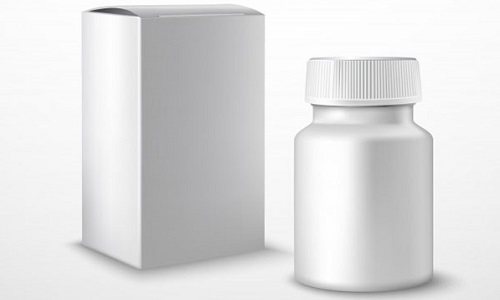
Prices for the drug LEKROLIN
Name:
OljaOi
Review:
Hello everyone!
Eyelash extensions are a common thing for me, and until the last few months it took place without any difficulties. The first sign that something was wrong appeared two months ago - it was a slight itching that quickly went away. The next month the situation worsened - the eyelid was swollen and itchy, but it went away on its own quite quickly. A one-time event, I thought, and decided to see the reaction at the next extension (I need to be sure). And I was convinced in full: a sleepless night, terrible rhinitis, swollen, red, sticky eyes - a classic allergy. Allergy medications are also common for me; I have been diagnosed with chronic hay fever since childhood. Hay fever, or seasonal allergic rhinoconjunctivitis, is a seasonal disease caused by an allergic reaction to plant pollen. I, like any Russian person, decided to try to get treatment myself. What do I absolutely not advise you to do? Moreover, our eyes are a very delicate topic. The pharmacy recommended Lecrolin eye drops. Volume: 10 ml. Shelf life: 3 years, after opening the bottle - 28 days. Country of origin: Finland or China. Appearance???The bottle is in a cardboard box. The cover is soldered to control the first opening. It opens easily, the dropper works without any problems. The product is transparent in color, without a pronounced odor. Indications: - allergic conjunctivitis; - allergic keratitis; - keratoconjunctivitis; - irritation of the mucous membrane of the eyes caused by allergic reactions (environmental factors, occupational hazards, household chemicals, cosmetics, ophthalmic preparations, plant pollen and pet dander). Dosage: At the beginning of treatment, 1-2 drops are prescribed into each conjunctival sac 4 times a day with an interval of 4-6 hours. If necessary, the frequency of use of the drug can be increased to 6-8 times a day. Treatment is continued until the symptoms of the disease disappear completely. For seasonal allergic conjunctivitis, treatment should begin immediately after the first symptoms appear or be used prophylactically before the start of the pollen season. Treatment is continued throughout the flowering season or longer if symptoms persist. If there is no positive effect from treatment within several weeks, the patient should consult a doctor. My impressions: I put one drop in each eye in the morning and evening, already on the second day the swelling subsided and my eyes stopped itching. In my situation, the drops helped, and very quickly. I can’t judge how this medicine will work in other situations, but in case of a summer exacerbation of hay fever, I will buy it, especially since the price is very affordable. Read the instructions carefully, there are contraindications! Thank you for your attention! All the best! | irecommend.ru Name:
Aliks Tess I have never understood allergies.
Perhaps it’s because most of my friends with allergies bravely endured the symptoms, sneezing and blowing their noses all spring, or avoiding citrus fruits and strawberries. I have never had allergies, but this year became somehow “fatal”. In the spring, I had to almost run to the emergency room because of a swollen palate. And then, at the beginning of summer, we got a rat. The cutest creature that I liked at first sight. I have never had an allergy to animals, and I really have a house full of them: a cat, rabbits, a parrot, fish, a turtle…. The rat was missing) When a week later I started sneezing while interacting with my new pet, I didn’t attach much importance to it. But within a couple of days, the sneezing turned into complete nasal congestion, which was then supplemented by a cough. I scoured the entire Internet in search of the best antihistamine, and I found something, but that’s another story, which I’ll write about soon. And I lived pretty well on the pills until October, and then... I thought I had conjunctivitis, but the antibiotic didn’t help, the doctor prescribed another one. No one suspected an allergy, but the eyes were watery, red, and their surface wrinkled disgustingly (swelling of the mucous membrane). This was complicated by the fact that I have been wearing contact lenses for 9 years, and I do not alternate between glasses. With my -8, I even walk around the house with glasses, like a drunken mole: I bump into objects, stumble, and drop everything. When I went to the doctor with glasses, the most terrible challenge was the stairs. The glasses are distorted, I could not adequately estimate the distance to the step…. Halfway through, I felt dizzy and almost vomited. In general, I began to dream about an operation to restore vision a hundred times more than before all this. If I didn’t put on contact lenses, my eyes would hurt wildly, and then my eyes would turn even worse. As a result, I myself already concluded that it was probably because of the rat. In recent days, I started coughing again, and in the morning I got up with a stuffy nose. The pills began to help less... And to hell with it, if I could not wear lenses... In general, then I found Lecrolin - the least expensive eye remedy for allergies. Here are drawn inflorescences with pollen, but in my case I should have drawn a rat. The composition contains the preservative benzalkonium chloride, which cannot be used with lenses. I spent a long time looking for what and why, the information is contradictory. Somewhere they write that for the entire period of treatment with products containing this thing, you need to give up lenses (not an option). Somewhere - that it’s enough to wait 30 minutes (this is suitable). It seems that the substance is attracted to the surface of the lenses, damaging it and creating difficult-to-remove deposits... But, as I already said, there is a lot of different information and it is contradictory. One thing is for sure - you can’t drip directly onto the lenses) The drops don’t start working at full strength right away, but within a day or two. For me, this is acceptable, because I was already in complete despair, afraid that nothing would help me. I have already started to get used to glasses a little (especially while at home). Some instructions: Here it says that there are dropper tubes (disposable) that can be used with lenses, but I haven’t found any of these on sale here. I didn’t have any side effects - only a slight tingling sensation the first time, when the mucous membrane was completely inflamed. Unfortunately, I didn’t take a photo during the most terrible period, but here it is after the first day with drops: It’s still quite scary and painful to put on lenses. Next day: By the evening of the second day, the eyes returned to normal. And from the third day I could already live a normal life - with contact lenses and makeup! So, the drops help, that’s for sure, but you shouldn’t forget about precautions: wash your hands, don’t rub your eyes, don’t push allergens into your eyes. It is advisable to take antihistamines orally. Unfortunately, I cannot say whether the effectiveness of Lecrolin decreases over time, but it was enough for three weeks - everything was fine with the eyes. And then a friend came to me, saw how much I was taking, dripping and splashing, and said that this is impossible. She persuaded him to give the rat to her. This is my first experience of giving away an animal, and if it weren’t for being in good hands, I would never have decided to give it away! So now I go to visit, squeeze the animal and sneeze) Results: I recommend Lecrolin! The product is effective and quite comfortable to use. I am reducing the star only because this form of release cannot be used with lenses, the effect is not instantaneous, and you need to apply drops several times a day. This is who we are, people. We want everything at once. | irecommend.ru Name:
motulek-nastij
Review: This drug was recommended to us by a doctor at the hospital. We ended up in the hospital after allergic edema. These drops were prescribed to us in therapy. We instill these drops 2 times a day, 1 drop into each eye. The drops sting a little. The drops themselves are transparent. They have no smell. The bubble is dense, opaque, and comfortable to hold in your hand. The shelf life of this drug is three years. Since we drop it only 2 times a day, the bottle will last for a long time. This drug was prescribed to us for hay fever. It creates a film on the membrane of the eye to prevent an allergic reaction. These drops have a therapeutic effect, since no more allergic reactions were observed. On the recommendation of a doctor from the intensive care unit, these drops should be applied during the flowering period of the plants. This is approximately from May to September. Since the consumption of this drug is minimal, it will be enough for the entire flowering period of the plants. The cost of this drug is also small, about 300 rubles per bottle. | otzovik.com
Rules of application
Any eye drops should be used as prescribed by a doctor and in accordance with the recommendations below:
- Do not change the dosage or cancel the treatment prescribed by your specialist at your own discretion.
- In the case of a combination of several types of drops, strict order should be observed and intervals between doses of different drugs should be maintained.
- You should not replace eye drops prescribed by your doctor with others, even if they have a similar composition.
- Store eye drops in the refrigerator, but before instillation, warm them slightly by briefly immersing the bottle in hot water.
- If after using the drug the burning sensation does not go away within 2-3 days, you should stop treatment and consult a doctor.
- It is better not to use contact lenses during treatment, or at least they should be put on 10 minutes after instillation.
This article will tell you why Taufon eye drops are prescribed.
Combination eye drops
Such drops are suitable if the cause of inflammation is not clearly established or there is a bacterial infection of the mucous membrane.
The basis is broad-spectrum antibiotics and local glucocorticosteroids (usually dexamethasone).
Combined products cannot be used for:
- Fungal infections of the organ of vision;
- Damage to the cornea with purulent discharge;
- Viral infections.
Other restrictions on use are similar to those for eye hormones.
Dexa-gentamicin
Price: 165 rub.
German eye ointment and eye drops.
In pediatric practice, the medicine can be used as prescribed by a doctor.
The ointment is used 2-3 times a day, drops - up to 6 times a day.
The maximum course of treatment is 2-3 weeks.
When used together with other eye medications, an interval of 15 minutes is required.
Dexatobropt
Price: 255 rub.
Romanian eye drops with dexamethasone and tobramycin.
Available in 5 ml bottles.
There is no data on use in pediatrics, so the drug is contraindicated for children.
If the medicine is combined with other ophthalmic drugs, then a 5-minute interval between installations is required.
Combinil
Price: 420 rub.
A combination of dexamethasone and ciprofloxacin can be used as drops in the ears and eyes.
Produced by an Indian pharmaceutical company.
Maxitrol
Price: 550 rub.
Belgian eye drops with neomycin, dexamethasone, polymyxin B.
Instill 4-6 times a day.
Tobradex
Price: 400 rub.
Belgian drug with dexamethasone and tobramycin.
The solution can be used for instillation into the eyes of a child over 1 year old.
